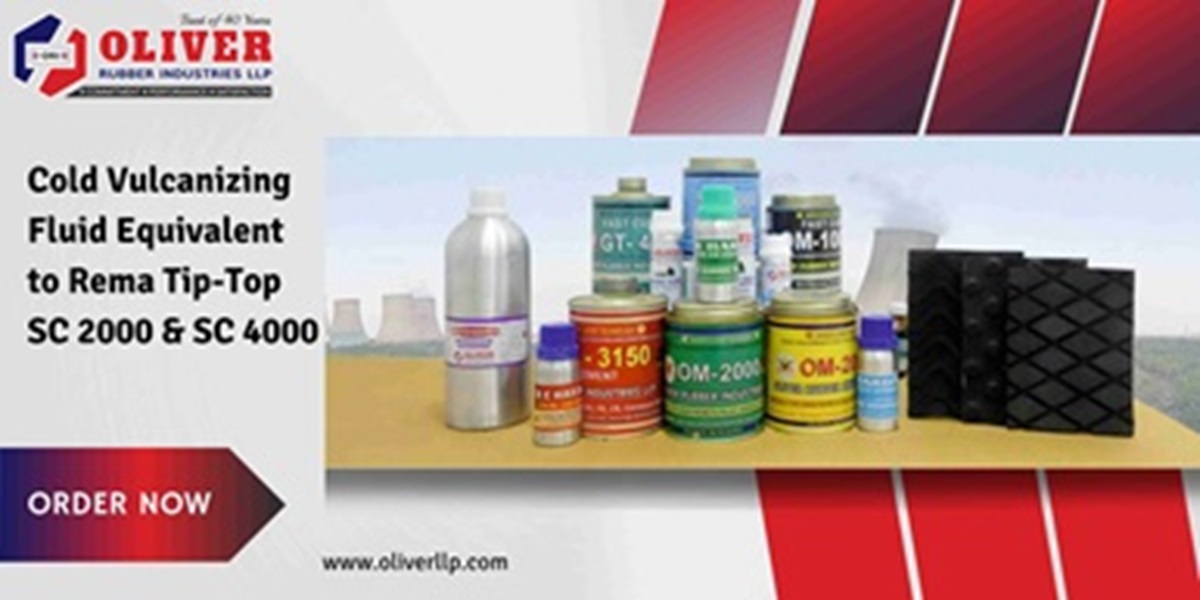At Oliver Rubber LLP, we take pride in being one of India’s leading manufacturers of high-quality rubber sheets, delivering innovative and reliable solutions for industries like automotive, construction, and manufacturing. Our commitment to excellence ensures that our rubber sheets meet diverse application needs, offering customizable options in dimensions, thickness, hardness, and other specifications. Among the many applications of our products, conveyor belt systems stand out as a critical component in various industries. To maximize the performance and lifespan of these systems, conveyor belt maintenance is essential. In this blog, we’ll explore how to maintain conveyor belts, common issues, protective measures, and why Oliver Rubber LLP is your trusted partner for conveyor belt maintenance solutions.
How to Do Maintenance on a Conveyor Belt?
Proper conveyor belt maintenance begins with a proactive approach. Regular inspections and timely interventions can prevent costly downtime and extend the belt’s operational life. Here’s a step-by-step guide:
Visual Inspections: Routinely check the belt for signs of wear, such as fraying edges, cracks, or surface abrasions. Look for misalignment or unusual noises during operation.
Cleaning: Keep the belt clean to prevent material buildup, which can cause slippage or damage. Use appropriate cleaning tools and avoid harsh chemicals that could degrade the rubber.
Tension Adjustments: Ensure the belt is neither too tight nor too loose. Incorrect tension can lead to premature wear or tracking issues.
Lubrication: Lubricate moving parts like pulleys and rollers as per the manufacturer’s recommendations to reduce friction and wear.
Component Checks: Inspect idlers, bearings, and pulleys for wear or damage. Replace faulty components promptly to avoid further issues.
Splicing and Repairs: Address cuts or tears immediately using high-quality repair materials, such as those provided by Oliver Rubber LLP, to restore belt integrity.
By incorporating these practices into a regular conveyor belt maintenance schedule, you can ensure smooth operations and minimize unexpected breakdowns.
What Is the Common Problem of a Belt Conveyor?
Despite regular maintenance, conveyor belts can encounter issues. Some common problems include:
Belt Mistracking: This occurs when the belt drifts to one side, often due to misalignment, uneven loading, or worn rollers. It can lead to edge damage or material spillage.
Slippage: Caused by insufficient tension, worn pulleys, or material buildup, slippage reduces efficiency and can damage the belt.
Material Carryback: Residual material sticking to the belt can cause buildup on return rollers, leading to mistracking or belt damage.
Wear and Tear: Abrasion, cuts, or impact damage from heavy loads can weaken the belt over time.
Splice Failure: Poorly executed or aged splices can fail, causing downtime.
Addressing these issues promptly through routine conveyor belt maintenance can prevent escalation and costly repairs.
How Do I Protect My Conveyor Belt?
Protecting your conveyor belt ensures longevity and operational efficiency. Here are some practical tips:
Choose Quality Materials: Opt for durable rubber sheets from trusted manufacturers like Oliver Rubber LLP, designed to withstand abrasion, impact, and environmental factors.
Install Belt Cleaners: Use scrapers or brushes to remove material buildup and prevent carryback.
Monitor Load Conditions: Avoid overloading the belt, as excessive weight can cause strain and damage.
Use Proper Splicing Techniques: Ensure splices are performed with high-quality materials and skilled technicians to maintain belt strength.
Implement Protective Covers: Shield belts from harsh weather or UV exposure in outdoor applications.
Schedule Regular Maintenance: Follow a conveyor belt maintenance checklist to catch potential issues early.
By investing in protective measures, you can significantly extend the life of your conveyor system.
Conveyor Belt Maintenance PDF
For detailed guidance, many companies provide conveyor belt maintenance PDFs as resources. These documents typically include troubleshooting tips, maintenance schedules, and safety protocols. At Oliver Rubber LLP, we recommend downloading industry-standard maintenance guides or contacting our team for tailored advice on maintaining belts using our high-quality rubber products.
Conveyor Belt Maintenance Checklist
A conveyor belt maintenance checklist is a vital tool for ensuring consistent upkeep. Key items to include are:
Inspect belt surface for wear, cuts, or tears.
Check belt tension and alignment.
Examine pulleys, rollers, and idlers for wear or damage.
Clean the belt and remove material buildup.
Lubricate moving parts as needed.
Test safety systems, such as emergency stops.
Verify splice integrity.
Using a checklist ensures no critical step is overlooked during conveyor belt maintenance.
Conveyor Belt Maintenance Training
Proper training is crucial for effective conveyor belt maintenance. Training programs should cover:
Inspection Techniques: Teaching staff to identify early signs of wear or damage.
Repair Methods: Training on splicing, patching, and component replacement using quality materials like those from Oliver Rubber LLP.
Safety Protocols: Ensuring workers understand how to operate and maintain belts safely.
Troubleshooting: Equipping teams to diagnose and resolve common issues like mistracking or slippage.
Investing in conveyor belt maintenance training empowers your workforce to maintain systems efficiently and safely.
Conveyor Maintenance Checklist
Beyond the belt itself, a comprehensive conveyor maintenance checklist should include:
Inspecting the conveyor frame for structural integrity.
Checking motor and gearbox performance.
Verifying electrical systems and controls.
Ensuring proper guarding and safety features are in place.
This holistic approach ensures the entire system operates smoothly.
Conveyor Belt Inspection Checklist
A conveyor belt inspection checklist focuses specifically on the belt and its immediate components:
Check for surface damage (cuts, abrasions, or cracks).
Verify tracking and alignment.
Inspect splices for signs of separation.
Examine belt edges for fraying.
Ensure cleaners and scrapers are functioning.
Regular inspections using this checklist are a cornerstone of effective conveyor belt maintenance.
Conveyor Belt Maintenance Schedule
A conveyor belt maintenance schedule outlines when tasks should be performed:
Daily: Visual inspections, cleaning, and basic tension checks.
Weekly: Detailed inspections of belts, rollers, and pulleys.
Monthly: Lubrication, component checks, and minor repairs.
Quarterly: Comprehensive system audits, including splices and alignment.
Annually: Major overhauls or replacements, if needed.
Adhering to a schedule minimizes downtime and maximizes belt life.
Conveyor Belt Maintenance Company – Oliver Rubber LLP
When it comes to conveyor belt maintenance, Oliver Rubber LLP is your trusted partner. Our high-quality rubber sheets are designed to withstand the rigors of conveyor applications, offering excellent resistance to abrasion, impact, and environmental factors. We provide customizable solutions to meet your specific needs, ensuring your belts perform optimally.
Our team at Oliver Rubber LLP is dedicated to supporting your conveyor belt maintenance efforts. Whether you need durable materials for repairs, expert advice on maintenance practices, or customized rubber sheets for new installations, we’ve got you covered. Our commitment to innovation and quality makes us a preferred choice for industries across India and beyond.
Conclusion
Effective conveyor belt maintenance is critical for ensuring operational efficiency and minimizing downtime. By following regular inspection routines, addressing common issues promptly, and using high-quality materials from trusted manufacturers like Oliver Rubber LLP, you can protect your conveyor belts and extend their lifespan. From maintenance checklists to training programs, a proactive approach is key to keeping your systems running smoothly.
For more information on how Oliver Rubber LLP can support your conveyor belt maintenance needs, visit our website or contact our team today. Let us help you keep your operations moving forward with confidence and reliability.


